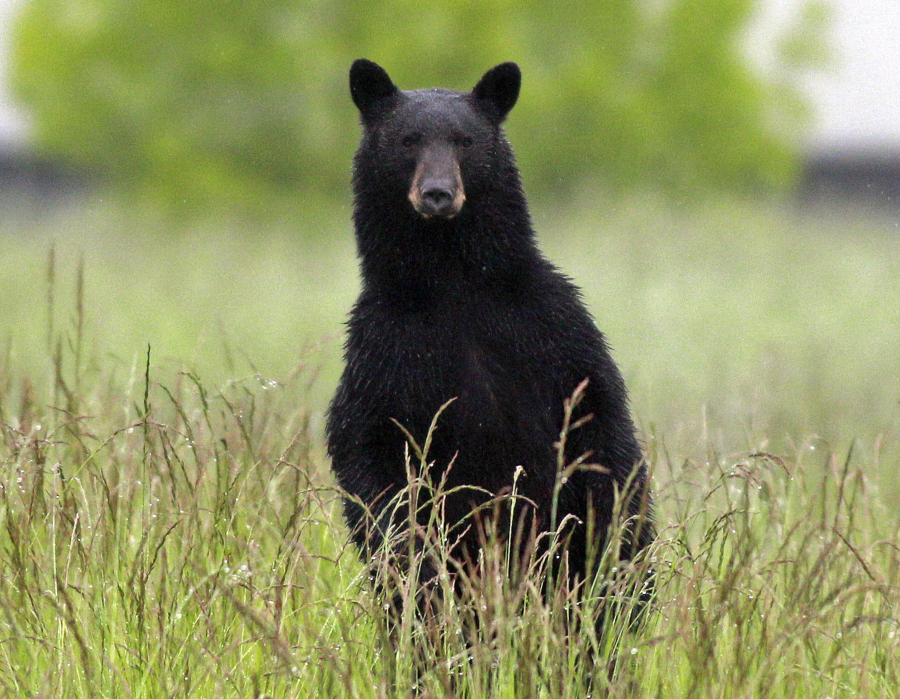BELLINGHAM — Each of us holds the key to reducing the likelihood that black bears are killed after interactions with humans, the Washington State Department of Fish and Wildlife says.
The WDFW reported it had to kill a 5- to 6-year-old sow believed to have two cubs in tow after an Aug. 3 incident along Y Road Trail to Stewart Mountain northeast of Bellingham, after the incident resulted in the jogger being injured.
WDFW said in a Wednesday news release that it has received “numerous” questions from state residents about recent black bear conflicts, including last week’s.
“Unfortunately, once bears know about a non-natural food source or are fed by humans, they keep coming back to that place,” the release states. “These bears can lose their fear of people, creating a threat of injury to humans. This often leads to wildlife managers needing to lethally remove black bears that are habituated to non-natural food sources or involved in conflicts with people.”
State policy dictates that bears that are involved in attacks, such as the last week’s encounter north of Lake Whatcom, be removed by lethal measures, the release states.
However, the release goes on to state that younger bears believed to be utilizing human-provided food sources can sometimes be captured and relocated. WDFW may use Karelian bear dogs and other methods to discourage further interaction with humans.
“Bear rehabilitation is only used for cubs that have become orphaned due to mortality of the adult female,” the release states. “With careful rehabilitation methods, cubs can be released into the wild without having learned to associate humans with food.
“Rehabilitators can’t effectively un-teach bears any human-food associations that they’ve learned.”
The Bellingham Herald has asked the WDFW if the two cubs believed to have been associated with last week’s encounter have been trapped yet, and if the agency plans to retrain and/or relocate them.
Relocation of adult bears who have become used to non-natural food sources provided by humans has been “less successful,” WDFW reported.
“Even long-distance relocation attempts are typically unsuccessful due to strong association with non-natural food sources once bears have become habituated,” the release states
For that reason, the WDFW says it is imperative that area residents be mindful about intentionally or unintentionally providing food sources that might attract bears.
In Washington, it is illegal to either negligently or purposely feed large carnivores, such as bears. It also can lead to human-bear encounters and potentially the bear having to be killed.
There was a lot of trash in the area where last week’s encounter occurred, Whatcom County Game Warden Dave Jones told The Herald, adding that the sow that was killed and her cubs had “hunkered down in that area for a couple of weeks because of that food source.”
Bears often are attracted to high-calorie human-provided food sources, such as garbage, bird feeders and food for pets, chickens and livestock.
“Sows (mother bears) may also teach their young about such food sources, habituating them to humans and setting the stage for future conflicts,” the release states.
There are an estimated 20,000 black bears within Washington, according to the release.
On average, the WDFW reports that it receives approximately 500 black bear complaints each year, ranging from glimpses of bears to encounters. But actual human-bear encounters are relatively rare.
Washington has only had one fatal black bear attack on a human, and that occurred nearly five decades ago in 1974, according to a previous WDFW release. Since 1970, state authorities have recorded 18 other human-black bear encounters that resulted in a documented injury, with the most recent before last week’s incident in 2015.
“Recent conflicts and black bear lethal removals are important reminders of the need to remove or properly secure bear attractants,” Wednesday’s release states. “Prevention is the best way to avoid a negative interaction and to keep bears from unnecessarily being killed.”
The WDFW website offers more information on living with black bears at wdfw.wa.gov/species-habitats/species/ursus-americanus#living.



